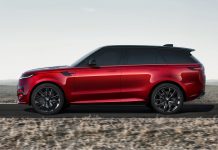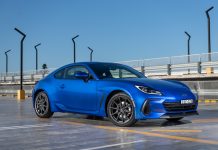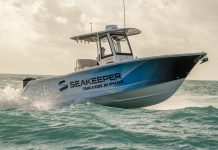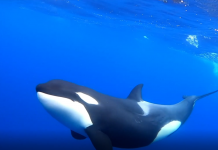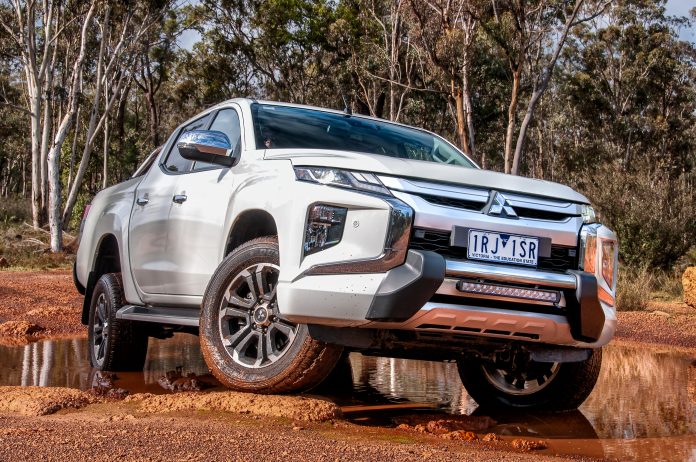One thing that has always impressed me about the Mitsubishi Triton is its innate ability to provide a good commercial foundation as a reliable work ute and still keep a respectable on-road driving character that makes it feel equally at home as a family daily driver. And our test Triton GLS dual cab 4WDrive auto maintained that high standard.
At the lower end of the cost spectrum for popular dual cab utes, the Triton range represents good value, offering interior comfort and an often-underestimated off-road ability straight off the showroom floor.
With some of the wettest conditions seen in Perth for some time, what better way to test the Triton’s resolve than with a busy run through the city congestion before highway cruising on country roads and finally pointing the nose into the bush for a succession of ruts, puddles, and slippery mud?
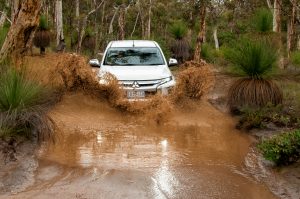
Interior style is a subjective thing; you might love it, hate it or be indifferent. The Triton neither excites nor offends, which means it strikes a balance as a practical space that’s easy to live with, easy on the eye, and is very comfortable. I like the clean, uncluttered design; everything is a cinch to operate, and it follows a logical layout. There’s 12v, HDMI and USB connectivity, a reach and tilt leather clad steering wheel, good audio, a 7” central screen, with Apple and Android Auto connectivity for your phone. Plus, an array of electronic driver assist systems that you’d expect in a modern well-featured dual cab. If you can jump into a vehicle for the first time and find what you need intuitively without having to study the dashboard, or constantly refer to the owner’s manual for the simplest of functions; then the designers have done a good job.
Around town, the Triton doesn’t have the bulk of many of its competitors, so you never feel as though you’re piloting a barge through crowded canals. The slender dimensions pay further dividends off-road, allowing you to squeeze through sections that leave the competition wearing freshly-formed pin stripes. Outward visibility is good, further enhanced by the Triton’s higher seating position, allowing you a greater awareness of surrounding traffic and what’s unfolding in front of you. Steering input at slow speed requires little effort to spin the Triton through its tidy 11.8m turning circle, making chaotic Saturday morning runs jostling for a parking spot in busy shopping centres less daunting.
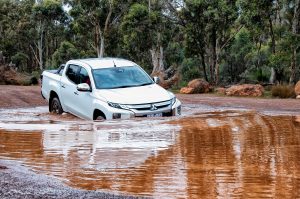
Back on the road for a quick family weekend getaway, cruising at highway speeds, the first thing you’ll notice is that Mitsubishi has done a good job in minimising road vibration and engine noise entering the cabin. The steering remains nicely weighted and will follow directional changes through long winding country roads in a relaxed manner, allowing you to ease your grip on the wheel and let your back settle into the seat to reduce driver fatigue when cruising long hours to reach the favourite holiday destination.
Pull open the back doors, and it’s good to see that rear passengers have been factored into the equation with practical leg and headroom. The backrest is raked for additional comfort, a fold-down centre armrest provides a place to hold a drink and roof mounted air circulation vents offer a comfortable breeze, rather than having rear console vents freeze off the knees in summer.
Up front, there’s a willing 2.4L four-cylinder intercooled turbo diesel power plant coupled to an efficient 6-speed auto that puts the Triton’s 430Nm of pulling power to good use as it harnesses the torque with each up-shift, and quickly allocates the 133kWs when needed for improved overtaking response. It’s hooked into Mitsubishis brilliant Super-Select 4WD-II system that allows you to engage 2H (rear-wheel drive only) for improved fuel economy, 4H (full-time 4WD) on wet slippery roads, 4HLc (locked) for moderate off-road trails or slippery gravel, and 4LLc (locked in low range) to multiply engine torque for more challenging conditions. You can effectively configure the vehicle’s driveline to provide the best traction options whatever the terrain.
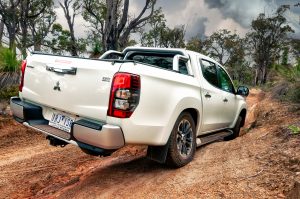
For the practicalities of work, the Triton has a braked tow capacity listed at 3,100kg. It will take a 900kg payload in the back, minus any accessories fitted and the pending tow ball weight of your camper trailer or caravan up to a maximum of 310kg.
Fuel capacity is only 75L, and Mitsubishi claims 8.6L/100. But with our week of testing over a combination of stop-start city traffic, highway hauling and off-road adventures, we averaged 9.8L/100. So, with a probable 760k range, you’d be wise to check where your available fuel stops will be on the longer hauls, especially when towing.
Our GLS was dressed up with a polished sports bar which tied in nicely with the modern front-end layout and chrome trimmings, plus a set of handsome dark grey and chrome 18-inch alloys fitted with 265/60R18 Dunlop Grand Trek highway terrain rubber. When staring down a long forestry trail that was considerably more under water than above, I was feeling a little dubious about the ability of the Triton’s footwear to deal with the conditions.
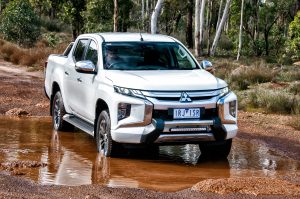
After engaging full time 4WD via the Super Select rotary dial and choosing our preferred path carefully, we slowly made our way through several shallow, wide and long ponds to reach higher ground that was covered in skim coat of slippery wet clay and gravel. Whilst the traction control system performed admirably given the slippery conditions, it was time to select 4HLc (locked) to equally distribute engine torque to both the front and rear axles, resulting in improved stability and forward momentum.
Eventually reaching a large rocky area, the track slowly twisted its way around large trees to reveal what would have been a moderately challenging ascent on a dry day. Needing to maintain a slow vehicle speed for stability but apply sufficient torque to pull the Triton through, we stopped at the base of the climb, placed the transmission into neutral and moved into 4LLc (locked in low range) and then engaged drive.
To our advantage, they also fitted our GLS with Mitsubishi’s clever Off-road Mode setting, now active in 4LLc low range to provide a choice of gravel, mud/snow, sand and rock. Engaging any of the settings will influence engine power delivery, automatic transmission shift response and braking to control wheel slip to maintain traction in demanding conditions.
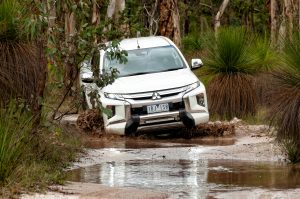
With the Triton electronically optimised for the terrain, smooth throttle application, and the ability to maintain three wheels in contact with the ground we followed a line to keep the vehicle level. The Triton’s approach, ramp over and departure angles of 31, 26 and 23 degrees respectively and a 220mm ground clearance proved to be the winning combination to see us through. But the Triton’s best effort was yet to come.
One side of the track was scalloped out by heavy rain and full of mud, and the other covered in loose rock. It would put the Triton on a 15-degree lean, with two corresponding wheels void of traction in goop, and the others on slippery rocks with negligible purchase. The electronic traction control would struggle to balance torque between the opposing wheels with neither offering any tangible grip. It was time to engage the Triton’s off-road party piece before entering the challenge, the quintessential rear locking differential.
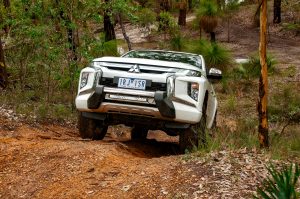
With locked rear axles, each rear wheel received equally distributed torque, and neither was restricted by brake application from the traction system. While others struggled to get through, the Triton acquitted itself admirably with an impressive display of capability. There was no need for aggressive throttle or driving, but no damage to the track or the Triton.
All things considered around town and on the open road, the Triton delivers exactly what’s advertised on the box. It’s a competent, comfortable workhorse that can just as easily perform the daily driver duties for an active family or couple. But I think its off-road ability was best summed up by one of the modified rig owners driving the same tracks we did. He walked back from his own vehicle to observe what a stock standard Triton could achieve, scratched his head, and admitted, “Well I guess it’s true… you can’t frighten a Triton”.
Fast Facts:
Price: $48,290
Engine: 2.4 litre 4 cylinder intercooled turbo diesel
Output: 133kW/430Nm
Transmission: Six-speed automatic
Fuel: 8.6L/100km
Safety rating ANCAP 5 Stars.


